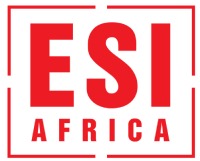Mining the gap: Africa’s missing share in the clean tech boom
As global demand for critical minerals increases, so will their ability to support economic growth among African resource holders
Africa as a whole currently captures less than 1% of the value generated from the manufacturing of clean energy technologies and their components.
This is indicated in the latest report by the International Energy Agency, looking at how African countries can move up the value chain in the global energy technology market. It highlights ways they can go beyond just mining and extraction by focusing more on processing minerals, producing materials and making technology.
The IEA notes that this low value capture comes despite Africa supplying a significant share of the world’s critical raw minerals—around 75% of global manganese, 70% of cobalt and nearly 20% of copper, all essential for clean energy technology production.
“African countries have the potential to change this, tapping into opportunities that can enable economic growth and job creation, as well as supporting domestic efforts to expand access to affordable energy, digitalise and diversify their economies,” IEA said.
This report explores three key elements of these opportunities on the African continent: critical mineral beneficiation, production of low-emissions, energy-intensive commodities, and clean energy technology manufacturing.
Clean energy needs African minerals
The report warns that as global demand for critical minerals increases, so will their ability to support economic growth among African resource holders. “Production of mineral resources is already a vital source of income for Africa, representing around 8% of government revenues in resource-rich African countries. The potential economic contribution of mineral production can be increased by moving up the value chain towards processing, smelting and refining,” it said.
The report also identifies opportunities for mineral beneficiation across the continent and cites East African countries as potential producers of spherical graphite for battery anodes. It also highlights South Africa and Gabon as having strong potential to expand production of high-purity manganese sulphate.
“Morocco could scale up its output of purified phosphoric acid, and the Democratic Republic of the Congo and Zambia hold substantial cobalt and copper resources that provide a strong foundation for producing processed materials.
“Tapping into the associated economic opportunities relies on emerging and developing economies succeeding in overcoming barriers to leverage their existing opportunities for clean industrialisation on the one hand.”
Have you read? Critical minerals potentials and benefits in Africa
The study further states that there are opportunities in the manufacturing of clean energy technologies themselves.
“Several countries, particularly in North Africa, have the potential to establish a foothold in the electric vehicle (EV) and battery manufacturing industries, building on their existing automotive industrial base. In the High Potential Case, Africa’s EV production would rise from virtually nil today to nearly 4 million units in 2035 and then on to 5 million in 2050.”
Cover photo: mariusz_prusaczyk©123rf.com


